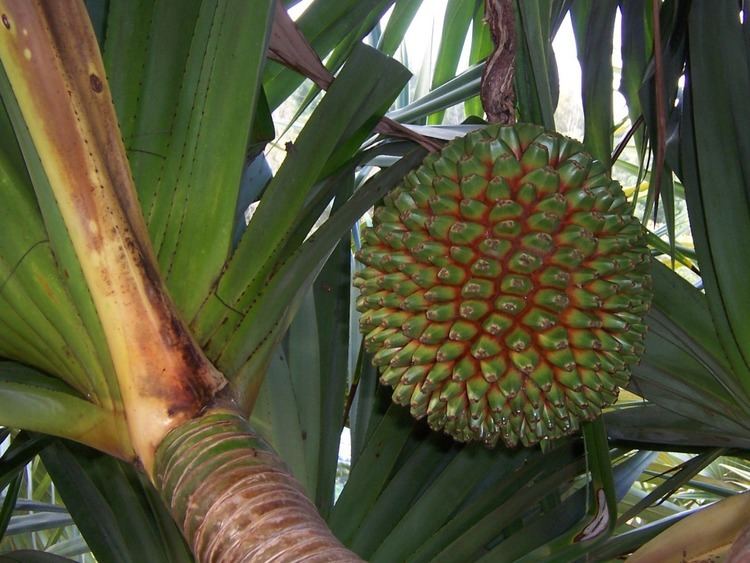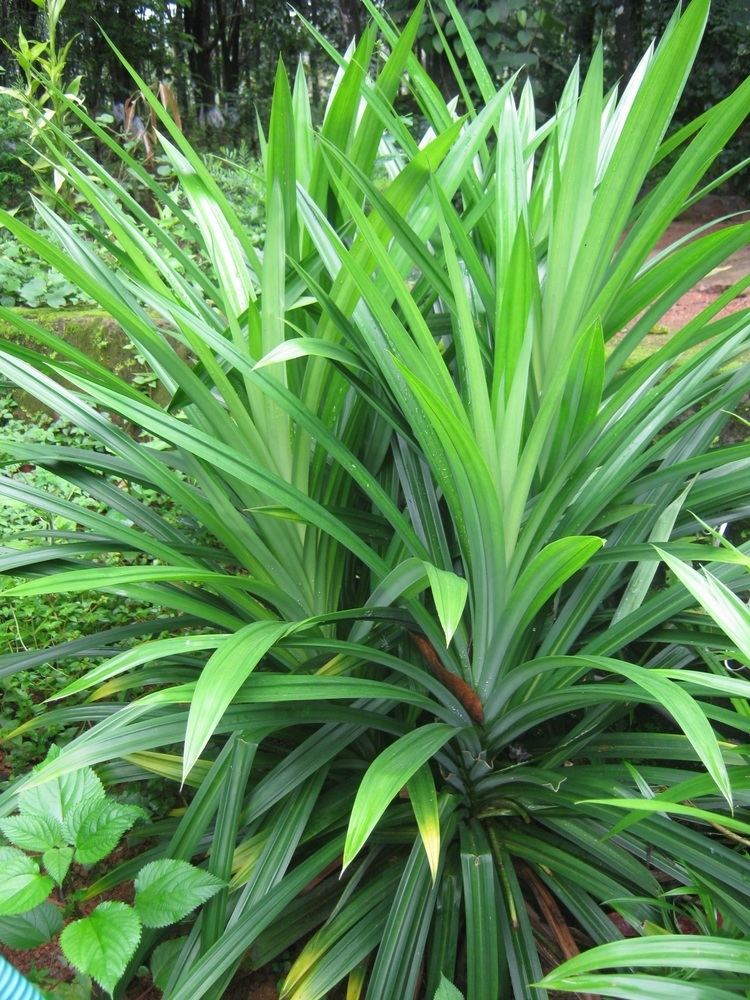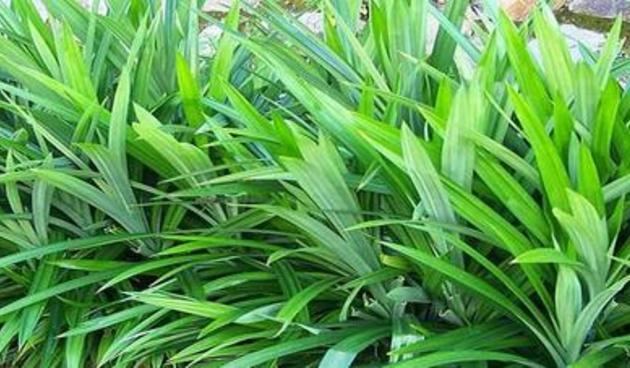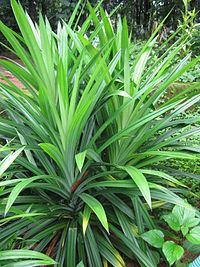Species P. amaryllifolius | Family Pandanaceae Rank Genus | |
 | ||
Lower classifications Pandanus tectorius, Pandanus amaryllifolius, Pandanus utilis, Pandanus fascicularis, Red fruit | ||
Biriyani leaves pandanus amaryllifolius pandan leaves plant
Pandanus amaryllifolius is a tropical plant in the Pandanus (screwpine) genus, which is commonly known as pandan leaves (/ˈpændənˌlivz/), and is used widely in South Asian and Southeast Asian cooking as a flavoring.
Contents
- Biriyani leaves pandanus amaryllifolius pandan leaves plant
- Botanical features
- Culinary use
- Use in traditional medicine
- References

Botanical features

The characteristic aroma of pandan is caused by the aroma compound 2-acetyl-1-pyrroline, which may give white bread, jasmine rice and basmati rice (as well as bread flowers Vallaris glabra) their typical smell. The plant is rare in the wild but is widely cultivated. It is an upright, green plant with fan-shaped sprays of long, narrow, blade-like leaves and woody aerial roots. The plant is sterile, with flowers only growing very rarely, and is propagated by cuttings.
Culinary use

In India and Bangladesh it is called Rampe and ketaki respectively, along with the other variety of pandan there (Pandanus fascicularis), and is used to enhance the flavor of pulao, biryani and sweet coconut rice pudding, payesh if basmati rice is not used. It acts as a cheap substitute for basmati fragrance as one can use normal, non-fragrant rice and with the help of pandan the dish tastes and smells like basmati is used. It is called Ambemohor pat in Marathi; Ramba in Tamil, Biriyanikaitha in Malayalam, pandan wangi in Indonesian, hsun hmway (ဆွမ်းမွှေး) in Burmese, pandan in Visayan languages and Tagalog, ใบเตย bai tooey in Thai, rampe in Sinhala, ស្លឹកតើយ sleuk toi in Khmer, Daun Pandan in Nonya cooking, Dứa thơm/lá nếp in Vietnamese, 七葉蘭 (Pinyin: Qi Lan Ye) in Chinese and बासमतिया पौधा ([bɑːsmət̪ɪjɑː pɑʊd̪ʱɑː]; "fragrant plant") in Magahi and Bhojpuri due to its fragrance.

The leaves are used either fresh or dried, and are commercially available in frozen form in Asian grocery stores of nations where the plant does not grow. They have a nutty, botanical fragrance that is used as a flavor enhancer in Indian, Bangladeshi, Sri Lankan, Burmese, Chinese, Vietnamese, Khmer, Laotian, Thai, Singaporean, Bruneian, Malaysian, Indonesian and Philippine cuisines, especially in rice dishes, desserts and cakes.

The leaves are sometimes steeped in coconut milk, which is then added to the dish. They may be tied in a bunch and cooked with the food. They may be woven into a basket which is used as a pot for cooking rice. Pandan chicken, (Thai: ไก่อบใบเตย, kai op bai toei), is a dish of chicken parts wrapped in pandan leaves and baked. The leaves are also used as a flavoring for desserts such as pandan cake and sweet beverages. Philippine cuisine uses pandan as a flavoring in buko pandan fruit salad, as well as rice-based pastries such as suman and numerous sweet drinks and desserts.
Bottled Pandan extract is available in shops, and often contains green food coloring.
Use in traditional medicine
Pandanus amaryllifolius has a number of local medicinal uses. Leaf extracts have been thought to reduce fever, relieve indigestion and flatulence and as a cardio-tonic.
